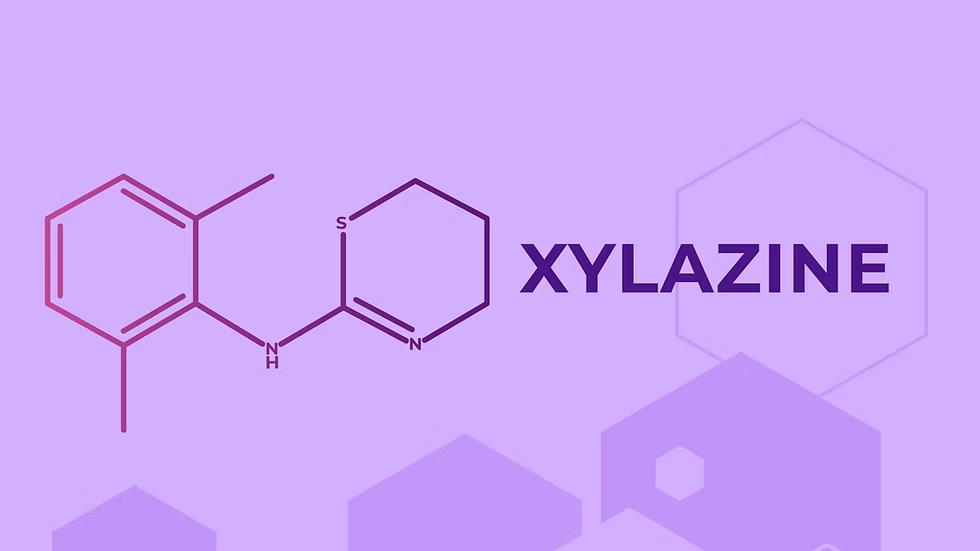

The Dangers of Xylazine: A Rising Threat in Addiction and the Role of Sober Living in Dallas
0
3
0
Xylazine, originally developed as a veterinary sedative and muscle relaxant, has become an alarming presence in the illicit drug supply, particularly when mixed with opioids like fentanyl. Known for its powerful sedative effects and high risk of tissue damage, xylazine has gained notoriety across the United States in recent years. In cities like Dallas, this emerging threat complicates the already devastating opioid crisis and poses unique challenges for treatment and recovery. Sober living environments in Dallas, such as those offered by Elements Luxury Recovery, are essential for helping individuals recover from the compounding effects of these substances in a safe and structured setting.
Xylazine is not approved for human use, but it has been increasingly found as an adulterant in illicit opioids, particularly in counterfeit pills and powdered fentanyl. Its pharmacological action centers on the central nervous system, where it acts as an alpha-2 adrenergic agonist. This mechanism leads to profound sedation, muscle relaxation, and a decrease in respiratory and heart rates. When combined with opioids, xylazine’s effects can amplify the risk of overdose, often rendering traditional overdose treatments like naloxone less effective. Because naloxone only reverses opioid effects, a person overdosing on a combination of fentanyl and xylazine may remain unresponsive even after naloxone administration.
What makes xylazine particularly dangerous is not just its pharmacological effects but its physical consequences. One of the hallmark signs of chronic xylazine use is the development of large, necrotic skin ulcers, often on the legs, arms, or injection sites. These wounds can develop even in individuals who do not inject the drug directly, as systemic exposure seems sufficient to trigger vasoconstriction and poor tissue perfusion. These lesions are highly prone to infection and can result in amputations if not treated properly. Unlike traditional soft-tissue infections related to intravenous drug use, xylazine-induced ulcers may not respond to standard wound care and often require specialized medical treatment.
Identifying xylazine use in a loved one is complex because it often occurs alongside more recognizable substances like heroin or fentanyl. Individuals may appear heavily sedated for extended periods, sometimes bordering on unconsciousness. They may exhibit extremely slow breathing, low blood pressure, and bradycardia. In cases of long-term use, family members might notice strange, slow-healing wounds or skin that appears discolored and damaged. Additional signs may include a persistent chemical odor, difficulty waking, and periods of confused or incoherent behavior that don’t align with typical opioid use.
Intervening in a situation involving xylazine requires urgent action. If someone is suspected of overdosing, emergency services should be contacted immediately. Administering naloxone is still recommended, as fentanyl is often a co-ingredient, but it is essential to communicate to paramedics that xylazine may be involved, as this may influence how they administer oxygen, fluids, and wound care. After the immediate danger is addressed, long-term treatment must involve not only addiction recovery but also medical care for the physical damage caused by the drug. Detoxing from xylazine may involve prolonged sedation monitoring and wound management, and requires specialized support that few standard rehab centers are equipped to provide.
This is where sober living environments become particularly valuable. Elements Luxury Recovery’s sober living Dallas program provides residents with access to clinical referrals for wound care specialists, consistent monitoring for sedation and healing, and a community of peers who understand the dual physical and psychological toll of addiction. Many clients struggling with xylazine addiction have also been exposed to trauma, homelessness, or previous unsuccessful treatment attempts. In sober living, individuals are given the time and support they need to stabilize both physically and emotionally, allowing for a deeper engagement with therapy and recovery planning.
A recent study published in Addiction found that the presence of xylazine in opioid drug supplies significantly increases overdose mortality, especially when not promptly recognized. The study also found that individuals who transitioned into recovery housing had a higher chance of treatment retention, largely due to the added stability and ongoing medical oversight that such environments provide. As the drug supply continues to evolve, especially in urban centers like Dallas, it is crucial that recovery systems adapt accordingly.
The emergence of xylazine as a dangerous street drug represents a new frontier in the opioid epidemic. Its unique ability to cause both respiratory suppression and catastrophic tissue damage means that traditional approaches to detox and rehab must be updated to account for its complex effects. For residents of Dallas seeking recovery from substances that include xylazine, sober living environments like those at Elements Luxury Recovery offer an essential bridge between survival and sustained healing. In a time when the landscape of addiction is rapidly changing, access to structured, informed, and compassionate care is more important than ever.



